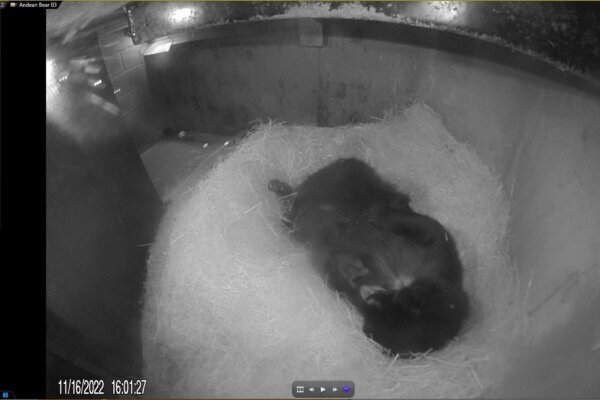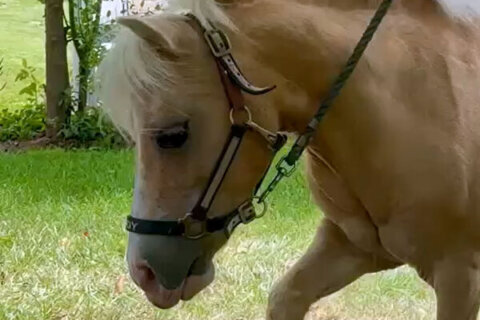Move over Xiao Qi Ji! Come spring time you will be able to visit with the two newest bear cubs at the Smithsonian National Zoo in D.C.
These multi-colored bears are not pandas though. They are closely-related Andean Bears.
Andean Bears haven’t been born at the National Zoo in eight years, but first time mom Brienne gave birth to two cubs on Nov. 15.
The first cub was born at around 4 p.m. and the second about 4 hours later.
Veterinarians and zoo keepers won’t be able to determine the sex of the cubs for two-to-three months. They will make their public debut in early spring, after they turn three months old.
Until then, you can take a look at the cubs on a live cam that’s in their den.

Brienne bred with the National Zoo’s nine-year-old Quito in late March or early April.
Sara Colandrea, National Zoo and Conservation Biology Institute animal keeper and North American Andean bear studbook keeper and Species Survival Plan (SSP) coordinator said about the birth in a statement:
These cubs are extremely important to the SSP demographically and genetically since Quito’s genes are new to the North American population. We’re looking forward to watching Brienne navigate motherhood and, of course, all the cute antics we’re bound to see from little bear cubs!”
The two cubs will eventually grow up to be somewhere between 180 to 340 pounds, depending on whether they are female or male. They will also have the cute brindle and speckled face like their mom and pop.
They will also eventually fill up on small animals, berries and grasses, but for now they are just concentrating on getting some milk and sleeping a lot.
Andean bears are vulnerable according to the International Union for Conservation of Nature’s Red List of Threatened Species.

Experts estimate that there are only 2,000 of the species left in the wild.
They are South America’s only bear species and usually dwell in the Andes Mountains from western Venezuela to Bolivia.







